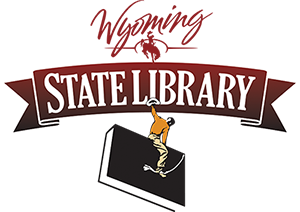What is assistive technology (AT)? It’s more straightforward than it may sound. AT is any device, tool, or adaptation that supports a person when participating in everyday activities.
“We use assistive technology, but nobody knows that term,” says Tekla Slider, Wyoming State Library Federal Documents Librarian. “It can be something as simple as magnifiers or reading glasses.”
Assistive technology promotes greater independence by enabling people to perform tasks that they were formerly unable to accomplish or had great difficulty. AT supports independence, increases self-confidence, reading comprehension, and reading ability, and enhances access to library resources.
 Tekla has been working on a collaborative project between the WSL and Wyoming Assistive Technology Resources (WATR) to increase awareness of assistive technology and its benefits throughout Wyoming. As the first step in this effort, the WSL funded a basic Assistive Technology toolkit for each of the 23 public library systems and seven academic libraries.
Tekla has been working on a collaborative project between the WSL and Wyoming Assistive Technology Resources (WATR) to increase awareness of assistive technology and its benefits throughout Wyoming. As the first step in this effort, the WSL funded a basic Assistive Technology toolkit for each of the 23 public library systems and seven academic libraries.
The project was also intended to highlight not just AT, but also the services provided by WATR, available to every Wyoming resident. The agency provides information and assistance, training, device demonstrations and “try before you buy” loans, help with acquiring AT, and access to low-interest loans for those purchases.
“Libraries disseminate information about resources,” Tekla said, “and this is a huge resource that is underutilized. Our partnership is to get their information into libraries who are seeing all walks of life. We don’t expect libraries to know all about assistive technology, but we want them to know about WATR.”
The kits were unveiled at this summer’s Wyoming Library Association conference where Tekla, along with Ryan Rausch and Felicia Arce from WATR, presented a program on “Supporting Patrons with Disabilities Access to Library Resources and Services.” The AT boxes contain a number of simple, low-tech devices that are intended to remain in the kits:
- Bookmark magnifiers – Makes objects larger for reading and general viewing.
- Jar opener grips – Textured, rubber grips assist in opening jar lids.
- Pencil grips – Gently positions fingers in the proper, ergonomic position for writing.
- Color overlay bookmarks – Reduce glare when placed on top of print text.
- Raised lined paper – Slightly raised bumps at each line gives feedback to stay between ruled lines.
- Masking aids – Isolate words and help readers focus on segments of text.
- Large print keyboard stickers – Large, individual letters applied to a standard keyboard makes keys easier to see.
- Picture communication book – Allows an individual to point to words, letters, or pictures to communicate.
“There was a lot of interest at WLA,” Tekla said, “When we were passing out kits, they’d immediately know someone who could use one of the tools. They recognized it in themselves, or they thought of someone in their lives who could benefit from it. So it did exactly what we wanted it to do.”
The kits came along with promotional materials to be distributed to the public, including information on WATR services and a rack card of helpful AT apps. Tekla said libraries could put them on display (as has been done at the WSL) and pass out the brochures and cards. They could be used for programming, such as a demonstration to seniors or homeschoolers. It all depends on what works best for the local library.
 Every day, libraries help people with assistive tech. They provide mobile carts, wheelchairs, magnifying and reading glasses for use in their buildings; offer a variety of eBooks, audiobooks, large print materials, and electronic databases; assist users with computers, eBook devices, and more; and visit patrons in their homes, daycares, schools, and other institutions. The WSL has been working with the Talking Books program for those unable to read regular print material due to visual, physical, or reading disabilities.
Every day, libraries help people with assistive tech. They provide mobile carts, wheelchairs, magnifying and reading glasses for use in their buildings; offer a variety of eBooks, audiobooks, large print materials, and electronic databases; assist users with computers, eBook devices, and more; and visit patrons in their homes, daycares, schools, and other institutions. The WSL has been working with the Talking Books program for those unable to read regular print material due to visual, physical, or reading disabilities.
“We’ve already tried to make libraries accessible to all, so here’s just another way to do that,” Tekla said.
The next step is training to address the many questions librarians had about implementing the kits. Plans include creating videos on Niche Academy. Tekla recommended a book from the WSL Professional Collection, Creating Inclusive Library Environments. TechSoup for Libraries has also compiled assistive technology resources that may be of interest.
Questions about AT in your library? Visit the Wyoming Assistive Technology Resources website or contact Tekla at tekla.slider@wyo.gov or (307) 777-6955.

